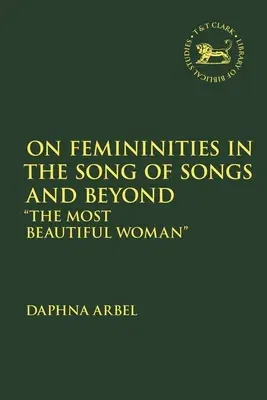Vita Daphna Arbel
(Author)On Femininities in the Song of Songs and Beyond: "The Most Beautiful Woman"Paperback, 27 July 2023

Temporarily out of stock
Free Delivery
Cash on Delivery
15 Days
Free Returns
Secure Checkout

Part of Series
Library of Hebrew Bible/Old Testament Studies
Print Length
192 pages
Language
English
Publisher
T&T Clark
Date Published
27 Jul 2023
ISBN-10
0567700097
ISBN-13
9780567700094
Description
Product Details
Author:
Book Format:
Paperback
Country of Origin:
US
Date Published:
27 July 2023
Dimensions:
23.39 x
15.6 x
2.54 cm
Genre:
Christian
ISBN-10:
0567700097
ISBN-13:
9780567700094
Language:
English
Location:
New York
Pages:
192
Publisher:
Weight:
453.59 gm